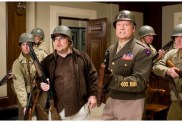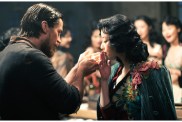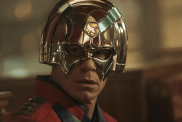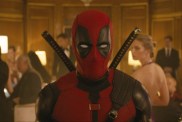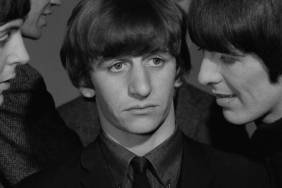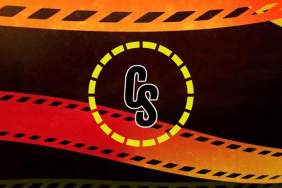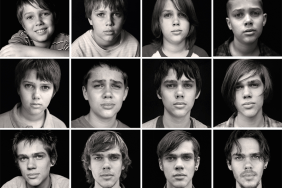
Over the last few years my interest in Akira Kurosawa has grown and grown, but it isn’t as if I have been familiar with his work for all that long. It wasn’t until August 25, 2007 that I saw my first Kurosawa film, and just as I assume to be the same for many before and after me, that film was Seven Samurai. I enjoyed it and began my exploration into Kurosawa using that film as my starting point. Since that day in August I have seen twelve more of Kurosawa’s features and with Criterion’s recent Eclipse release titled “The First Films of Akira Kurosawa” I have added four more to that tally.
This was my first time watching one of Criterion’s Eclipse releases, which seem to primarily dedicate themselves to ensuring lesser known films from well known directors never die, and while they don’t get the full Criterion treatment they will live on. They come without any special features and packaged in slim DVD cases, and in this case each release includes a short essay included on the inside of the case written by Stephen Prince, author of “The Warrior’s Camera: The Cinema of Akira Kurosawa.”
The films have not been remastered and are all presented in their original 1.33:1 aspect ratio with a mono audio track and English subtitles. The four films in the set mark the first four films directed by Kurosawa beginning with Sanshiro Sugata (1943) followed by The Most Beautiful (1944), Sanshiro Sugata, Part Two (1945) and The Men Who Tread on the Tiger’s Tail (1945). All four of these films saw their first release from Criterion late last year when they released AK 100: 25 Films by Akira Kurosawa in commemoration of what would have been the director’s 100th birthday. Now they are being offered separately.
In terms of visual and audio quality I was impressed by the visuals on Sanshiro Sugata, The Most Beautiful and The Men Who Tread on Tiger’s Tail, but Sanshiro Sugata Part II is extraordinarily damaged, muddy and a bit of a disappointment. The audio on each release is also rather rough. Some of this can be attributed to the transfer and perhaps some to the original audio mix as sometimes it’s quite clear if I was trying to understand the Japanese alone without subtitles it would likely be impossible at some points and other times the background music is so loud it pretty much drowns out any dialogue being spoken. It’s one of those times I was thankful I needed subtitles, otherwise I’d probably be rewinding and trying as hard as possible to make out what the characters were saying.
As for the films themselves…
Sanshiro Sugata (1943)

It doesn’t take long to recognize the work of Kurosawa and Sanshiro Sugata proves his style was evident very early on. Most notable to me was the camerawork, the dissolves, the editing and his use of slow motion.
The story of Sanshiro Sugata is also very much Kurosawa, telling a martial arts tale of two warring styles — jujitsu and the new variation of the same style, judo. At the center of the story is the title character drastically, yet excellently under-played by Susumu Fujita as he goes from a pupil of Shogoro Yano (Denjiro Ookouchi) to becoming an established hero figure. The film is a right of passage feature and Sugata has his ups and downs.
The climactic battle between Sugata and the film’s villain Gennosuke Higaki (Ryunosuke Tsukigata) is classic Kurosawa as the two fight in a windswept field where Sugata’s training is put to the test. After a violent outburst earlier in the film he must show his maturity and restraint when dealing with a foe that certainly isn’t interested in reciprocating.
The Most Beautiful (1944)

Sanshiro Sugata has minor bits of political propaganda in it (primarily Higaki’s notable Western attire), but The Most Beautiful is a blatant propaganda feature as Prince notes in his essay writing:
Originally, [Kurosawa] had been tapped by the navy to direct an action film about Zero fighter planes. But by 1943, it was becoming clear that Japan would lost the war, and Kurosawa thought it unlikely that the navy would spare planes for a film. So he made this patriotic morale booster instead.
The film takes place in an optics factory and as the pressure of the war rages on the workers have been asked to increase their production — men by 100% and women by 50%. The Most Beautiful focuses solely on the female side of the story and their eagerness to serve their country no matter the cost. They have even asked to up the quota in an effort to help more.
Despite its political motivations — promoting self-sacrifice for the betterment of the country (a theme Kurosawa didn’t particularly believe in) — the film is rather elegantly told. However, I grew weary of the redundant story-telling device regarding the health of the workers. While it may have certainly been an accurate portrayal of life in such a scenario, it’s rather tiresome in feature film form as Kurosawa moves from scene to scene only to rarely tread new territory.
The film features Kurosawa’s first and only wife Yoko Yaguchi in the lead role and even though I didn’t particularly enjoy it, the story behind it is what’s most interesting. The time period it was made in, the theme of the material and Kurosawa’s approach to the story are fascinating and give it added weight when looking at the director’s work as a whole.
Sanshiro Sugata, Part Two (1945)

Susumu Fujita reprises the title role in a film that was ultimately released three months before the bomb was dropped on Hiroshima and is far more political than its predecessor. Of course, it should also be mentioned Kurosawa didn’t want to make this film and by the time it was released there were hardly any cinemas left standing to show it. Perhaps this was for the best as Kurosawa has been quoted as saying, “This film did not interest me in the slightest. I had already done it twice. This was just warmed-over.”
This is hardly an exaggeration as many of the elements from the first film bleed into the sequel outside of a side story involving American boxing, as the United States is portrayed as a brutish invader.
In the sequel Sugata is once again confronted by the Higaki family, although this time it is by the two brothers of Gennosuke — Tesshin and Genzaburo — the latter of which reminded me a lot of various extreme characters seen in many of Kurosawa’s films, but most notably the beggar from Dodes’ka-den, at least in terms of his appearance. Where the first film focused on the relationship between jujitsu and judo, the sequel adds karate into the mix and all three are seen as preferably alternatives to the savageness of American boxing.
As I said earlier, the transfer on this one is really rough. The climactic finale shot in a nasty snow storm looks as if it would have been phenomenal had it been shot only a few years later and in widescreen, but here it’s just a muddled mess. The film, however, is decent, I just wish it had looked a bit better.
The Men Who Tread on the Tiger’s Tail (1945)

Coming in at 59 minutes The Men Who Tread on the Tiger’s Tail is the shortest of the four films, none of which runs longer than 85 minutes. This is also Kurosawa’s first foray into the world of Japan’s warrior heritage, something he’s obviously best known for with films such as Seven Samurai, Ran and Kagemusha.
The story derives from Noh and kabuki theatre in which a 12th century lord (Tadayoshi Nishina) and his six samurai retainers attempt to make their way through enemy territory disguised as monks. It’s a rather talky film that loses steam in its final 15 minutes. Had it been a traditional feature length film this wouldn’t be all that much of a complaint, but considering it’s just under an hour, it’s best to say this film completely derails in its final scene.
Perhaps the best aspect of the film is the eccentric porter played by Kenichi Enomoto who reminded me a lot of Kyoami (Pita), the entertaining fool from Ran. Though I would say Enomoto turns in a far more comedic performance than Pita did in Ran. In fact it’s a character Prince notes in his essay got the film banned by censors who felt it was “rude that [Kurosawa] was making fun of a sacred historical incident.” The film was banned as an “illegal, unreported” production and was thusly not released in Japan until 1952.
Overall, Criterion’s Eclipse presentation of Kurosawa’s first four films is, in my opinion, a success though the $48 price tag at Amazon.com is not exactly worth it. This feels more like a sub-$40 buy if you ask me considering you aren’t getting the traditional Criterion treatment filled with rare-extras and a 42-page accompanying booklet. The price seems to solely be based on the rarity of these films, which is both understandable, but also a bit of an over-estimation.
Personally I enjoy having it in my collection and am equally interested in adding Criterion’s “Postwar Kurosawa” to my collection as well just to round things out. However, at $55.96 that one will just have to wait.
